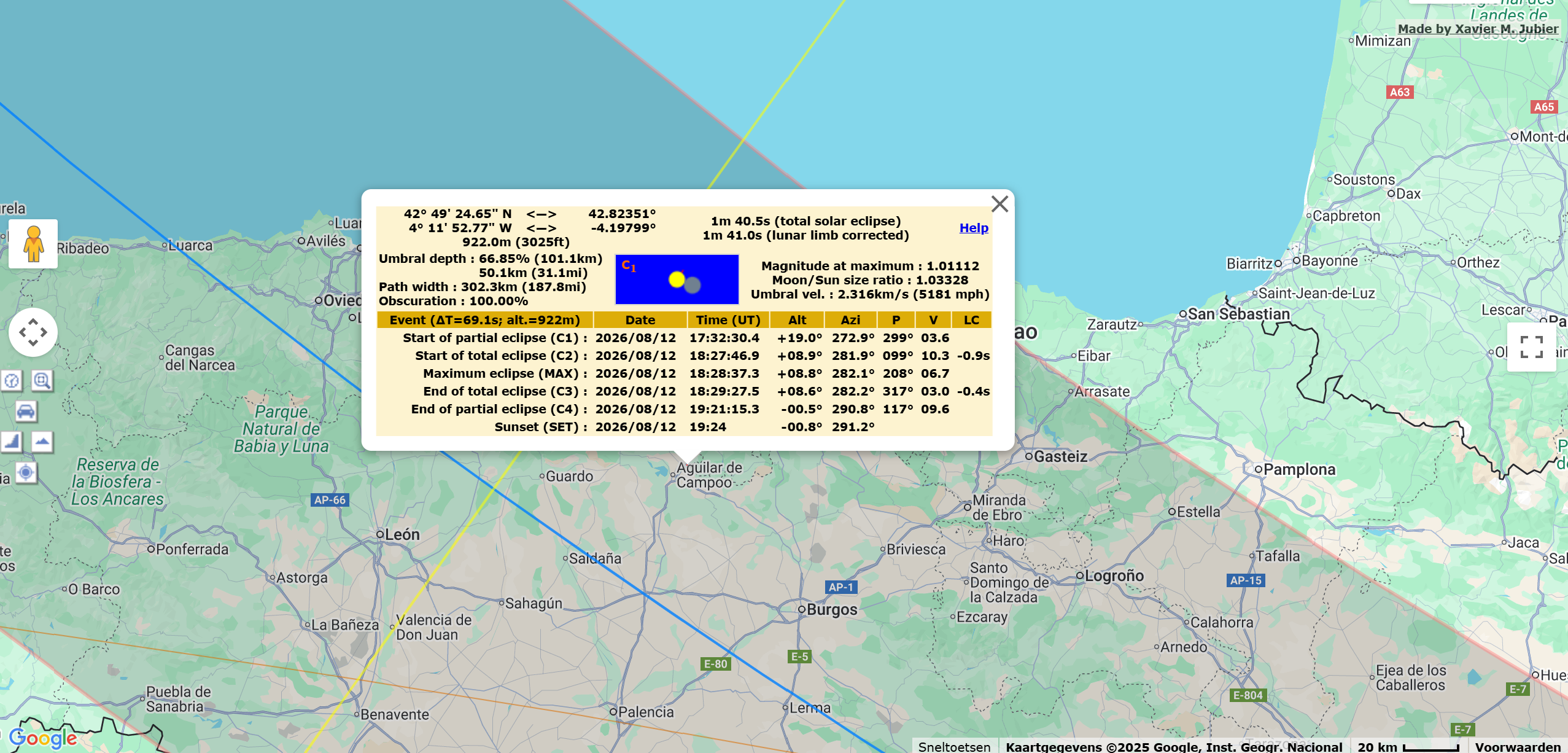¡Tu carrito está actualmente vacío!
Eclipse solar total
Most people calling an eclipse “pretty cool” are talking about a partial eclipse, the Sun just shines a little less brightly and you can see a bite missing with eclipse glasses. Even the tiniest sliver of Sun, however, spoils the full effect.
During a total solar eclipse the light truly goes out: the Moon completely covers the Sun’s disc and, only then, can you see – with the naked eye – for the first time.the Sun’s glowing outer atmosphere the corona.

Totality is rare. Unless you travel, there’s less than a 25% chance of experiencing one in your lifetime. The Moon’s shadow path is narrow ,often about 100 km wide. So you need to be in exactly the right place, ideally near the center line, to enjoy the longest darkness.
On 12 August 2026 our moment arrives: late afternoon in northern Spain,
around Aguilar de Campoo
 , you’ll have over a minute and a half of a totally eclipsed Sun. Because the Sun will be low, it’s especially important to have an unobstructed horizon. This is why eclipse travel is worth it: that unique interplay of physics, nature and emotion compressed into a few breathtaking minutes.
, you’ll have over a minute and a half of a totally eclipsed Sun. Because the Sun will be low, it’s especially important to have an unobstructed horizon. This is why eclipse travel is worth it: that unique interplay of physics, nature and emotion compressed into a few breathtaking minutes.
Plan or deepen your experience with these trusted resources:
Eclipse Atlas – Michael Zeiler: interactive global maps with detailed eclipse paths and timings.
EclipseWise.com – Fred Espenak: NASA-grade predictions and tables of past and future eclipses.
WhenIsTheNextEclipse.com – Jamie Carter: easy-to-read guides and travel tips for upcoming eclipses.
Xavier Jubier’s Eclipse Website: precision calculators and Google Maps overlays for eclipse planning.
NationalEclipse.com: practical viewing info, safety tips and U.S.-focused events.
Eclipses visibles en España – Instituto Geográfico Nacional (IGN): official Spanish government site with maps, timings and local viewing information for the 2026 eclipse.